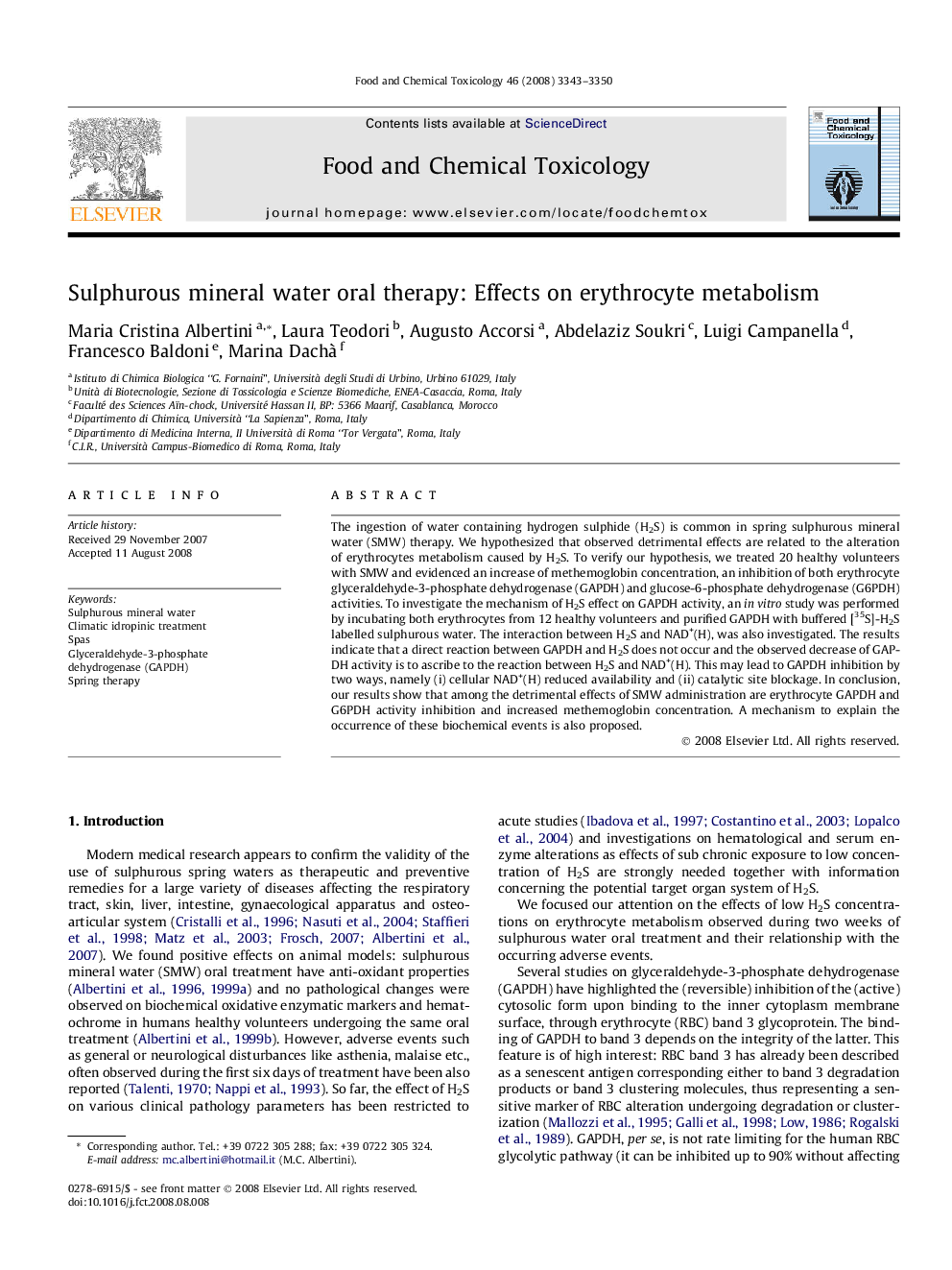| Article ID | Journal | Published Year | Pages | File Type |
|---|---|---|---|---|
| 2587251 | Food and Chemical Toxicology | 2008 | 8 Pages |
The ingestion of water containing hydrogen sulphide (H2S) is common in spring sulphurous mineral water (SMW) therapy. We hypothesized that observed detrimental effects are related to the alteration of erythrocytes metabolism caused by H2S. To verify our hypothesis, we treated 20 healthy volunteers with SMW and evidenced an increase of methemoglobin concentration, an inhibition of both erythrocyte glyceraldehyde-3-phosphate dehydrogenase (GAPDH) and glucose-6-phosphate dehydrogenase (G6PDH) activities. To investigate the mechanism of H2S effect on GAPDH activity, an in vitro study was performed by incubating both erythrocytes from 12 healthy volunteers and purified GAPDH with buffered [35S]-H2S labelled sulphurous water. The interaction between H2S and NAD+(H), was also investigated. The results indicate that a direct reaction between GAPDH and H2S does not occur and the observed decrease of GAPDH activity is to ascribe to the reaction between H2S and NAD+(H). This may lead to GAPDH inhibition by two ways, namely (i) cellular NAD+(H) reduced availability and (ii) catalytic site blockage. In conclusion, our results show that among the detrimental effects of SMW administration are erythrocyte GAPDH and G6PDH activity inhibition and increased methemoglobin concentration. A mechanism to explain the occurrence of these biochemical events is also proposed.
